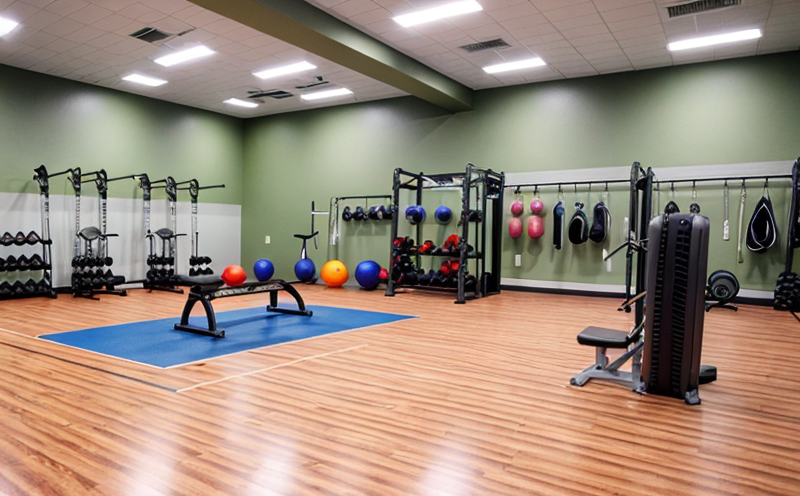Handle Strength Testing in Gym Equipment
The handle strength testing of gym equipment is a critical component in ensuring user safety and performance. Handles are not only essential ergonomic features but also pivotal in the functionality and durability of various fitness machines such as treadmills, ellipticals, rowing machines, and weightlifting benches. This test evaluates how well the handles can withstand the forces generated during typical use by consumers.
Consumer products like gym equipment must meet rigorous standards to protect users from potential injuries due to failure or improper design. The International Organization for Standardization (ISO) has established guidelines that manufacturers should follow when designing and testing their products, including ISO 12100:2010, which provides a general framework for safety assessment of machinery.
For instance, in the case of treadmills, handles are subjected to repeated stress from users gripping them during walking or running exercises. The test simulates these conditions by applying cyclic loading at various points along the handlebars. This helps manufacturers identify any weak spots that could lead to breakage under real-world usage scenarios.
The testing process begins with proper specimen preparation, which involves selecting representative samples of each type of handle used across different models within a product line. These specimens are then mounted onto specialized test rigs capable of applying controlled forces in multiple directions.
- For elliptical machines, the focus is on evaluating how securely the handles remain attached throughout high-intensity workouts.
- In rowing machines, it's crucial to ensure that handles do not slip or become loose during dynamic movements such as pulling strokes.
- Weightlifting benches require tests that mimic the grip forces exerted by users lifting heavy weights.
The results of these tests are analyzed using sophisticated software tools that compare measured data against predefined thresholds specified in relevant standards. Compliance with these standards ensures that products meet minimum safety requirements while also enhancing user experience through optimal handle design.
By incorporating handle strength testing into their quality assurance processes, manufacturers can significantly reduce the risk of accidents and improve overall product reliability. This proactive approach not only protects consumers but also builds brand trust by demonstrating commitment to high-quality manufacturing practices.
Why It Matters
The importance of handle strength testing cannot be overstated when it comes to maintaining user safety in fitness environments. Gym equipment handles are often used without proper supervision, meaning they must endure a wide range of stresses and strains over extended periods. Regular maintenance checks may help extend the life span but cannot entirely prevent all types of failures.
Consider the example of a person using an elliptical machine who suddenly loses their grip on the handle due to wear or breakage. Such incidents could result in falls, sprains, or even more severe injuries if not addressed promptly. By conducting thorough handle strength tests early in the product development cycle, manufacturers can catch potential issues before they impact end-users negatively.
Moreover, compliance with international standards like ISO 12100 helps establish credibility within both domestic and global markets. Adhering to these guidelines demonstrates a commitment to producing safe and reliable products that meet industry expectations. This is especially important given increasing awareness among consumers about the importance of personal health and safety.
Furthermore, robust handle strength testing contributes to longer product lifecycles by identifying design flaws early on. Early detection allows manufacturers to correct these issues before large-scale production begins, saving time and resources while improving overall product quality.
Why Choose This Test
Selecting the right type of handle strength testing is essential for ensuring accurate results that reflect real-world usage conditions. There are several factors to consider when choosing a suitable test method:
- Type of Handle Material: Different materials may require different types of testing rigs and loading mechanisms.
- Expected Load Range: Understanding the expected loads helps in selecting appropriate test parameters such as frequency, amplitude, and duration.
- Environment Conditions: Factors like temperature, humidity, and vibration can affect handle performance. Testing should replicate these environmental factors where applicable.
- User Interaction Patterns: Simulating typical user interactions provides more realistic data for analysis purposes.
Incorporating these considerations ensures that the testing process accurately reflects the intended use of gym equipment handles, thereby providing valuable insights into product performance and durability. This information can then be used to improve future iterations of products or address specific design challenges encountered during initial deployments.





